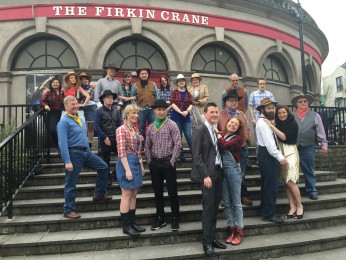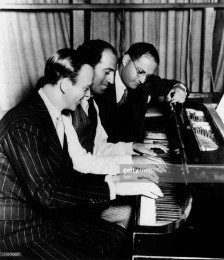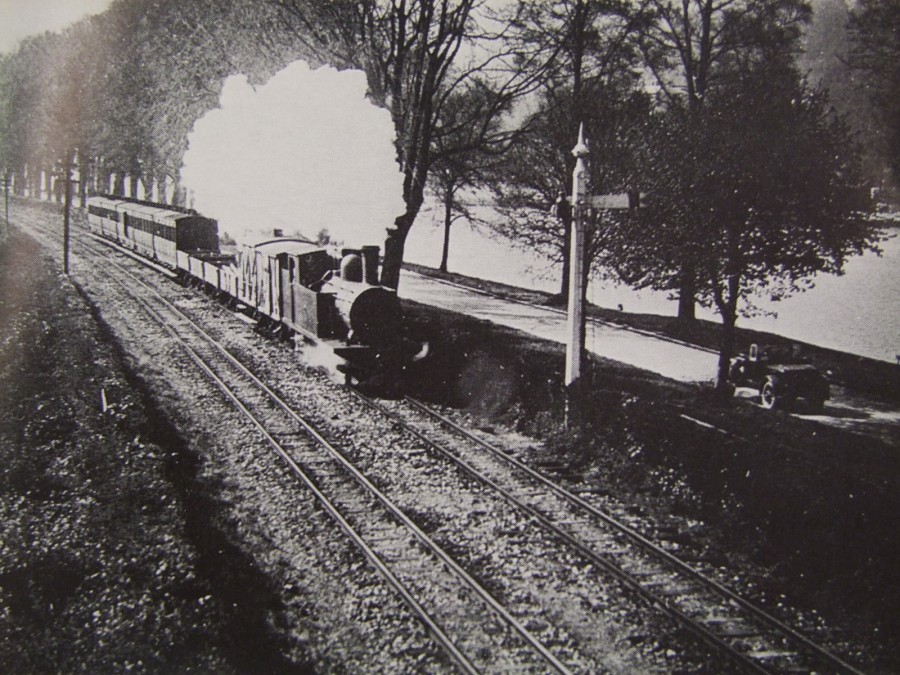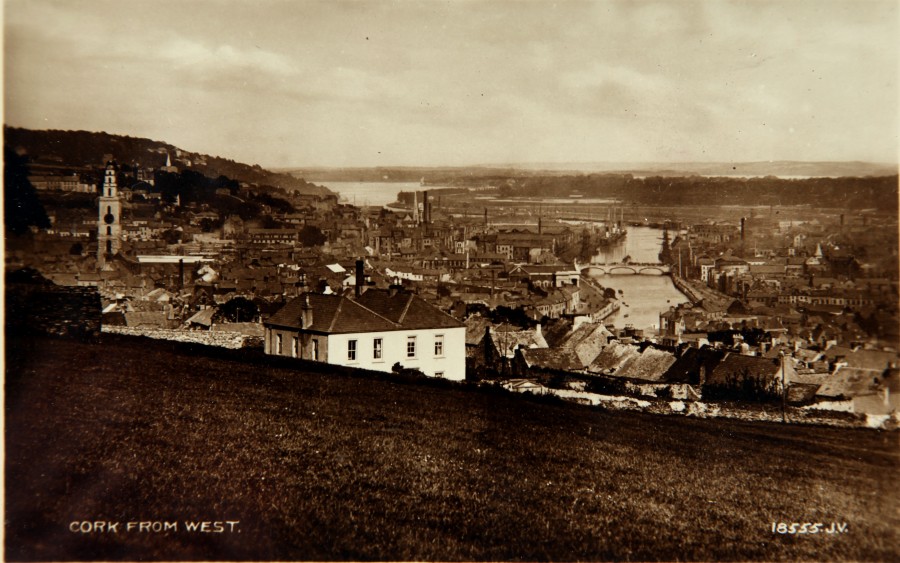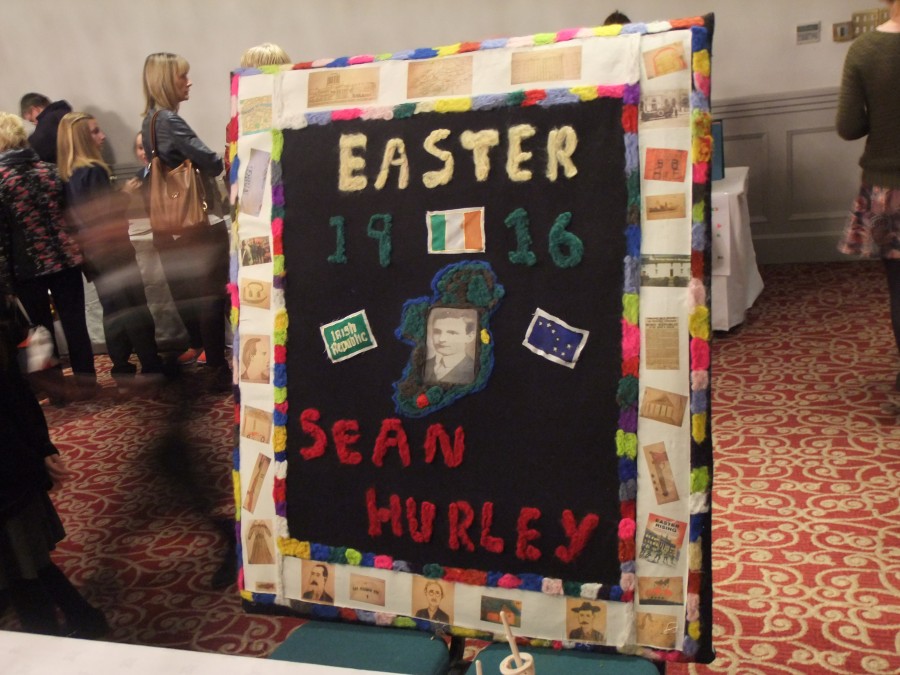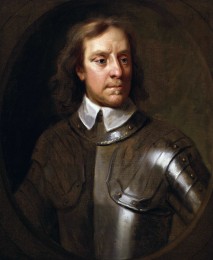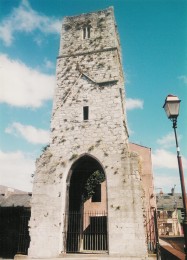20/04/2016
Kieran’s Our City, Our Town, 21 April 2016
Kieran’s Our City, Our Town Article,
Cork Independent, 21 April 2016
Crazy for You
My second foray with Cork City Musical Society brings Crazy for You the musical from 29 April to 1 May in the Firkin Crane Shandon, four performances (three evening shows and a matinee). The show for all the family is being directed by myself, has a cast of 30 and a 7-piece band, with musical direction by Michael Young and choreography by Aisling Byrne Gaughan.
We are delighted to present our musical to the public. Our cast of 30 have worked very hard on this production to bring a toe-tapping, sing-along and funny musical, which will leave a smile on the faces of the audience. Amateur musical societies are multiple in nature up and down the country. All bring their local communities together under a volunteer and charity umbrella – collaborating and bringing people together to create an outlet for people and to put drama, music and all ultimately form a key cultural vein within towns and villages. It is important that a city such as Cork has a musical society to promote the inherent love for musical theatre.
Crazy for You is a romantic love musical with lyrics by Ira Gershwin, and music by George Gershwin. Billed as “The New Gershwin Musical Comedy”, it is largely based on the song writing team’s 1930 musical, Girl Crazy, but incorporates songs from several other productions as well. George and Ira Gershwin will always be remembered as the songwriting team whose voice was synonymous with the sounds and style of the Jazz Age. By the time of their 1924 Broadway hit, Lady Be Good!, George had worked with lyricist Buddy DeSylva on a series of revues, George White’s Scandals, while Ira reveled in success with composer Vincent Youmans on Two Little Girls in Blue. But from 1924 until George’s death in 1937, the brothers wrote almost exclusively with each other, composing over two dozen scores for Broadway and Hollywood. Though they had many individual song hits, their greatest achievement may have been the elevation of musical comedy to an American art form.
The history of jazz has its roots firmly planted in the American cities of New Orleans, Chicago, and New York City. And the musical tradition within these cities still lives on today. As jazz spread around the world, it drew on different national, regional, and local musical cultures, which gave rise to many distinctive styles. New Orleans jazz began in the early 1910s, combining earlier brass-band marches, French quadrilles, ragtime and blues with collective polyphonic improvisation. In the 1930s, heavily arranged dance-oriented swing big bands, Kansas City jazz, a hard-swinging, bluesy, improvisational style and Gypsy jazz (a style that emphasized musette waltzes) were the prominent styles. Ira Gershwin was a joyous listener to the sounds of the modern world. He had a sharp eye and ear for the minutiae of living. He noted in a diary: “Heard in a day: An elevator’s purr, telephone’s ring, telephone’s buzz, a baby’s moans, a shout of delight, a screech from a ‘flat wheel’, hoarse honks, a hoarse voice, a tinkle, a match scratch on sandpaper, a deep resounding boom of dynamiting in the impending subway, iron hooks on the gutter”.
In studying the history of jazz music on the other side of the Atlantic, it is very interesting to research the anti-jazz movement in Ireland in the 1930s. It is difficult to imagine the halting of such glorious toe-tapping music such as “I Got Rhythm”. In an article in the History Ireland magazine (1993) by Jim Smyth entitled Dancing, Depravity and all that Jazz, The Public Dance Halls Act of 1935 he notes the pressure for constraints on the dance halls was becoming forceful. The Gaelic League re-launched its anti-jazz campaign in 1934 with a statement very much in tune with the sentiments of the bishops: “It is this music and verse that the Gaelic League is determined to crush…its influence is denationalising in that its references are to things foreign to Irishmen: that it is the present day instrument of social degradations all too plain, even in Ireland. That was the reason for their-launching of the anti-jazz campaign, the reason it received the blessing of the church and the approval of the state. The League was quick to condemn politicians who were seen as behavin an ‘anti-national’ fashion”. The Secretary of the League, attacking the broadcasting of jazz on Radio Éireann, had this to say about the minister responsible: “Our Minister of Finance has a soul buried in jazz and is selling the musical soul of the nation for the dividends of sponsored jazz programmes. He is jazzing every night of the week”. A number of County Councils adopted resolutions condemning jazz and all-night dancing. In January 1934 a large demonstration took place in Mohill, County Leitrim. It was made up mostly of young people and the press estimated the attendance at 3,000, with five bands and banners inscribed with “Down with Jazz” and “Out with Paganism”. Support came from church and state.
But one can imagine that deep within some dance halls, the needs to release this soulful and spirit enhancing music. Come and enjoy Cork City’s musical production of Crazy for You, 29 April-1 May, see www.firkincrane.ie for tickets.
Captions:
840a. Some of the cast for the upcoming Cork City Musical Society production of Crazy for You, The New Musical; 29 April-1 May, www.firkincrane.ie for tickets (picture: Kieran McCarthy)
840b. George Gershwin at piano with Ira Gershwin and Fred Astaire (source: Getty Images)
Kieran’s Our City, Our Town, 14 April 2016
Kieran’s Our City, Our Town Article
Cork Independent, 14 April 2016
Talk on Daily Life in 1916
Next Saturday 16 April at 11am, as part of the Lifelong Learning Festival Week, I will give a talk on Cork and daily life in 1916 in the Cork City and County Archives in Blackpool (all free, all welcome). It will form part of the half day seminar entitled Cork and the Easter Rising. Speakers will also include Dr John Borgonovo (UCC), Cork and the 1916 Rising (12noon); at 1.30 pm Rosaleen Underwood (Prof. Genealogist) will speak on Roibárd Langford, His Family History and his role in 1916 in Cork (Lieutenant, Cork No. 1 Brigade). Mark Cronin will speak on Blackpool in 1916: A Cork Suburb at the Crossroads (2.30 pm). Come for one talk or all of them. Booking at 0214505887.
I am currently working on a project that takes the year 1916 from the point of view that there were multiple conversations to be heard during the year – a kaleidoscope of ideas which provided the context and framework for revolution – everyday life being one – some led Cork citizens to connect with the Republican mantra at the time and others to just maintain existence, survive and struggle with the bleakness of a national and local economy. Entering the Cork Examiner on 1 January and progressing page by page one discovers key nuggets about the nature of Cork society, the soul of Ireland’s southern capital, the ongoing conversations about maintaining a contemporary status of being one of Ireland‘s distinguished port cities, and all the advantages and problems that run with that.
January 1916 begins with the aftermath of a winter storm – buildings were windswept and damaged, transport networks such as the City’s tramways were indented – as such there was nothing the Corporation of Cork and the citizens could do but sit it out and wait; much was out of their hands; the storm was something bigger than themselves. Indeed, the thread ‘much was out of their hands’ permeated throughout Irish society at this time – pervaded Cork society at this time. Despite, the rationing of food and materials, the pulses of society in Cork retained it as an ambitious place. Unemployment, jobs, requests for wage increases, Union Interventions, the role of employers and the needs of rate-payers reverberate in the pages throughout the year. The debates of the Cork industrial Association pops up in discourse throughout the pages of the paper, their efforts culminating in the large scale announcement of Ford Tractor and Car manufacturing coming to Cork in 1917. The Cork Harbour Board revelled in this announcement as well as plans for the physical rejuvenation of its quays. Another artery of the city was its train network travelling into County Cork. One can read about the benefits of such lines as the Cork Bandon and South Coast Railway, the Cork Muskerry Tram, the Cork Blackrock and Passage Railway Line connecting people, animals, fisheries and place from the coast and hinterland to the city and vice-verse – igniting the region and city into one. The same direction was pushed by the Munster Agricultural Society – whose aims consistently led to discussions on the role of land, cattle, the prices of Ireland’s traditions and industries – exports destinations, and ultimately the intertwinement into the British Empire.
The city’s institutions such as its hospitals – Mercy Hospital, South and North Infirmary, and institutions such as the City and County gaols, the Magdalene Asylum, the Sailor’s Home as well the City’s workhouse or Cork Union record the need to address the needs of society and to provide more financial aid and food to citizens immersed in large scale poverty.
The other pillars of Cork Society were its educational ones – the core schools that appear are the North Monastery, the South Presentational Convent, Crawford Municipal Technical Institute and the Cork School of Commerce. All continue through the press to showcase the importance of education and life-long learning in escaping from poverty and to help the overall societal pull to a better life.
The role of the Catholic church in society is ever felt – the refusals to leave cinemas open on a Sunday, the role of public professions of faith in galvanising public expressions of religion through events such as the confraternities and Corpus Christi, are written about in depth. The death of Bishop O’Callaghan ended another chapter in the city’s religious life and opened a new one on the rise of Bishop Cohalan and his take on non-violence and faith-based community approaches.
The public representation by City Councillors and Lord Mayor Butterfield on municipal issues from the provision of social housing to park provision is enormous– there is the role of escapism in the programmes of Cork Opera House, the Palace Theatre – and even in Cork Park Racecourse – as horses galloped across its mud-soaked landscape. GAA matches, athletics, handball, cricket are all recorded in depth on the Monday edition.
There is much to learn from this time – not just on the political side but that life itself in any city keeps moving and that society needs to grow and evolve with it – and that even from a dark time in Ireland’s past, there is much to learn about the diverse framework of historical events and how they shape our lives and our future.
Captions:
839a. Cork Blackrock & Passage train, The Marina, c.1920 (Source: Cork City Library)
839b. View of Cork c.1910 (source: Cork City Museum from the book, Cork City Through Time by Kieran McCarthy & Dan Breen)
Cllr McCarthy’s Community Talent Competition 2016
Cork’s young people are invited to participate in the eighth year of Cllr Kieran’s McCarthy’s ‘Community Talent Competition’. The auditions will take place on Sunday 8 May between 10am-5pm in the Lifetime Lab, Lee Road. There are no entry fees and all talents are valid for consideration. The final will be held two weeks later. There are two categories, one for primary school children and one for secondary school students. Winners will be awarded a perpetual trophy and prize money of €150 (two by €150). The project is being organised and funded by Cllr Kieran McCarthy in association with Red Sandstone Varied Productions (RSVP).
Cllr McCarthy noted: “In its eight year, the talent competition is a community initiative. We generally get to audition people who have very little experience of performing. Within the audition process there is friendly feedback from our judges and if the auditionee gets through there are workshops to offer advice and support. The talent competition is all about encouraging young people to develop their talents and creative skills, to push forward with their lives and to embrace their community positively. I am delighted with the nuggets of talent that we have found in Cork communities over the years and very proud of those who post audition and competition, have taken up music, drama, and other elements of the performing arts within Cork – they engage with their talent and develop and enjoy it more”. Further details can be got from the talent show producer (RSVP), Yvonne Coughlan, 086 8764685 or email rsvpireland@gmail.com.
Kieran’s Question to the City Manager/ CE, Cork City Council Meeting, 11 April 2016
To ask the CE on (a) the progress of St Luke’s Church and the hand-over to Tigh Fili, and (b) the progress made in the negotiations with securing Civic Trust House going forward for the festival bodies? (Cllr Kieran McCarthy)
Kieran’s Talks, Lifelong Learning Festival Week
For the forthcoming Lifelong Learning Festival Week, Douglas Road Cllr Kieran McCarthy will give a talk on some of the histories of West Cork through old postcards at the meeting room of the Church of the Real Presence, Curaheen on Wednesday 13 April, 10.30am. Based on his book, West Cork Through Time, Cllr McCarthy noted: “The talk focuses on in selective detail postcards from Cork City museum of the region of West Cork from one hundred years ago. It takes the reader from Bandon to Castletownbere through the changing landscapes and seascapes. This region is a striking section of Ireland’s coastline, over 320 kilometres in length, encompassing a raw coastal wilderness with expansive inlets eroded away by the Atlantic Ocean. The old postcards represent many memories of the landscape, sold to visitors and locals a century ago.”.
Cllr McCarthy will also give a talk on Cork and daily life in 1916 in the Cork City and County Archives in Blackpool at 11am on Saturday 16 April (all free, all welcome). It will form part of the half day seminar entitled Cork and the Easter Rising. Kieran is currently working on a book that takes the year 1916 from the point of view that there were multiple conversations to be heard during the year – a kaleidoscope of ideas which provided the context and framework for revolution – everyday life being one – some led Cork citizens to connect with the Republican mantra at the time and others to just maintain existence, survive and struggle with the bleakness of a national and local economy. Cllr McCarthy noted: “Entering the Cork Examiner on 1 January and progressing page by page one discovers key nuggets about the nature of Cork society, the soul of Ireland’s southern capital, the ongoing conversations about maintaining a contemporary status of being one of Ireland‘s distinguished port cities, and all the advantages and problems that run with that”.
Kieran’s Our City, Our Town, 7 April 2016

Kieran’s Our City, Our Town Article,
Cork Independent, 7 April 2016
Discover Cork: Schools’ Heritage Project 2016
This year marks the thirteenth year of the Discover Cork: Schools’ Heritage Project co-ordinated by myself. The Project for 2016 recently culminated in two award ceremonies. It is open to schools in Cork City and County – at primary level to the pupils of fourth, fifth and sixth class and at post-primary from first to sixth years. A total of 44 schools in Cork took part this year. Circa 1200 students participated in the process and approx 200 projects were submitted on all aspects of Cork’s history.
One of the key aims of the project is to allow students to explore, investigate and comment on their local history in a constructive, active and fun way. The emphasis is on the process of doing a project and learning not only about your area but also developing new personal skills. Many of the topics in the city such as Shandon or UCC have a myriad of history books written on them. However, the challenge in this project is to get students to devise methodologies that provide interesting ways to approach the study of local history for up-and-coming generations. Submitted projects must be colourful, creative, have personal opinion, imagination and gain publicity. These elements form the basis of a student friendly narrative analysis approach where the students explore their project topic in an interactive way. In particular students are encouraged to attain primary material through engaging with a number of methods such as fieldwork, interviews with local people, making models, photographing, cartoon creating, and making short films of their study topic.
Students are to experiment with the overall design and plan of their projects. It attempts to move the student to become more personal and creative in their approaches. Much of the work could be published as local heritage / history guides to people and places in the region. For example, a winning class project from Cork Educate Together on Grattan Street this year focussed on the history of 1916 in Cork City Centre researched it, mapped out its legacies through interviewing local people and even added in their own mixed family history to add to the complexity of the 1916 narrative. Light was shone on lesser commemorated volunteers who fought in Dublin in the Rising – for example born in 1887, near Drinagh, Sean Hurley was the only Corkman who died in or was executed for his participation in the 1916 Easter Rising. In literature about Michael Collins you will see Sean’s name. Sean’s sister Kate was Michael’s sister-in-law; she was the first wife of Michael’s oldest brother Johnny Collins. To commemorate the memory of Sean Hurley and his fallen comrades, a day of celebration and remembrance, in their honour will be held in Drinagh, County Cork, 1 May 2016.
This year marks went towards making a short film or a model on projects to accompany history booklets. Submitted short films this year had interviews of family members, neighbours to local historians to the student taking a reporter type stance on their work. Some students also chose to act out scenes from the past. Students from Our Lady of Lourdes National School, Ballinlough this year composed a rap song on the story University College Cork.
The creativity section also encourages model making. The best model trophy in general goes to the creative and realistic model. Models of Cork City Gaol and St Anne’s Church, Shandon featured this year in several projects – not only physical models but Minecraft digital models as well.
Every year, the students involved produce a section in their project books showing how they communicated their work to the wider community. It is about reaching out and gaining public praise for the student but also appraisal and further ideas. Some class projects were presented in nursing homes to engage the older generation and to attain further memories from participants. Students were also successful in putting work on local parish newsletters, newspapers and local radio stations and also presenting work in local libraries. This year the most prominent source of gaining publicity was inviting the public into the classroom for an open day for viewing projects or putting displays on in local GAA halls, credit unions, community centres and libraries.
Overall, the Discover Cork: Schools’ Heritage Project attempts to provide the student with a hands-on and interactive activity that is all about learning not only about your local area but also about the process of learning by participating students. The project in the city is kindly funded by Cork Civic Trust (viz the help of John X Miller), Cork City Council (viz the help of Heritage Officer Niamh Twomey), the Heritage Council with media support from the Evening Echo as well. Prizes were also provided in the 2016 season by Lifetime Lab, Lee Road (thanks to Meryvn Horgan), Sean Kelly of Lucky Meadows Equestrian Centre Watergrasshill and Cork City Gaol Heritage Centre. The county section is funded by myself and students. A full list of winners, topics and pictures of some of the project pages for 2016 can be viewed at my website www.corkheritage.ie and on facebook at Cork, Our City, Our Town. For those doing research, www.corkheritage.ie has also a number of resources listed to help with source work.
Captions:
838a. Representatives of the County schools involved in the Discover Cork: Schools’ Heritage Project 2016 at the recent award ceremony in Silversprings Convention Centre (picture: Yvonne Coughlan)
838b. Tapestry from Derryclough NS, Drinagh commemorating the life of 1916 Rising participant, Sean Hurley (picture: Kieran McCarthy)
Crazy for You Musical
Cork City Musical Society to present award winning musical Crazy for You in Firkin Crane
Cork City Musical Society is preparing for its second musical outing. This time they take on Crazy for You from 29 April to 1 May in Firkin Crane, four performances (three evening shows and a matinee).
The show for all the family is being directed by Cllr Kieran McCarthy, has a cast of 30 and a 7-piece band, with musical direction by Michael Young and choreography by Aisling Byrne Gaughan.
Founder of the society Cllr McCarthy noted “We are delighted to present our musical to the public. Our cast of 30 have worked very hard on this production to bring a toe-tapping, sing-along and funny musical, which will leave a smile on the faces of the audience. Amateur musical societies are multiple in nature up and down the country. All bring their local communities together under a volunteer and charity umbrella – collaborating and bringing people together to create an outlet for people and to put drama, music and all ultimately form a key cultural vein within towns and villages. It’s important that a city such as Cork has a musical society to promote the inherent love for musical theatre”.
Crazy for You is a romantic love musical with lyrics by Ira Gershwin, and music by George Gershwin. Billed as “The New Gershwin Musical Comedy”, it is largely based on the song writing team’s 1930 musical, Girl Crazy, but incorporates songs from several other productions as well.
Crazy for You won the 1992 Tony Award for Best Musical. Memorable Gershwin tunes include I Can’t Be Bothered Now, Bidin’ My Time, I Got Rhythm, Naughty Baby, They Can’t Take That Away from Me, But Not for Me, Nice Work if You Can Get It, Embraceable You and Someone to Watch Over Me. It’s a high energy comedy which includes mistaken identity, plot twists, fabulous dance numbers and classic Gershwin music.
Tickets are e.20 online at www.firkincrane.ie or from the box office at 021 4507487. There is a special deal of four tickets for e.70.
CRAZY FOR YOU ®
THE NEW GERSHWIN ® MUSICAL
Music and Lyrics by George Gershwin and Ira Gershwin
Book by Ken Ludwig
Co-Conception by Ken Ludwig and Mike Ockrent
Inspired by Material by Guy Bolton and John McGowan
Originally produced on Broadway by Roger Horchow and Elizabeth Williams
Kieran’s Our CIty, Our Town, 31 March 2016
Kieran’s Our City, Our Town,
Cork Independent, 31 March 2016
Cork Harbour Memories (Part 54)
Cromwell Comes to Cork
On 30 January 1649, the parliament in England arranged the beheading of Charles I and plans were made to restore the throne to parliament itself through the proclamation of a new king, Charles II (continued from last week). To suppress any royalist support in Ireland, a new army was established under the leadership of the new Lord Lieutenant in Ireland, Oliver Cromwell. Cromwell landed in Drogheda on 15 August 1649 and swiftly took the town for the new parliament. The town’s defenders did not surrender and the town was besieged accordingly. Stories relate that three thousand combatants lay dead on the streets of Drogheda, following Cromwell’s attack.
Cromwell proceeded to Ross and sent out small contingents into the Munster countryside to take note of royalist military activities. Cromwell’s next major town for taking was that of Wexford which comprised a large amount of Royalist Protestant inhabitants. Soon after Waterford, Duncannon, Clonmel, Limerick, Galway and Kilkenny fell. The New Model Army met its only serious opposition at the Siege of Clonmel, where its attacks on the town walls were repelled at a cost of up to 2,000 men. The town nevertheless eventually surrendered.
In Cork, the principal plotter and commander of Cromwell’s forces in Munster was Richard Townsend (later landowner of the Castletownsend region in West Cork). On the night of 16 October 1649, Townsend put plans into operation to take Elizabeth Fort off Barrack Street in Cork for Parliament. The choice of this night was due to the fact that the Royalist captain, Muschamp was away and the fort with its thirty-five men on duty that night was easily secured for parliament. Soldiers are also recorded as marching on the main guard at North Gate Drawbridge and forcing their way into the town. Seven days after the takeover of the walled town, a letter was sent to Cromwell informing him of the position. Shortly after, the anti-parliament Protestant army in Munster surrendered and an agreement was drawn up, which was signed by each member of the army itself submitting themselves to the parliament in England and the Lord Lieutenant, Cromwell.
In the case of events that happened in Cork City in 1639, two urban folklore stories are prominent in the old antiquarian books. Tuckey’s Cork Rembrancer (1837) records that on the night of 16 October 1649 the taking of the town came as a surprise to the governor, Sir Robert Starling who did envisage losing his authority in the walled town of Cork. A second story told is recounted in the Journal of the Cork Historical and Archaeological Society in 1905 by Mr Moore. It that tells of the escape of the wife of an officer named Lady Fanshawe from Red Abbey, the site of an old Augustinian Abbey, the tower of which still stands off Douglas Street. Her husband had previously been in the service of Charles I and she is said to have detailed an account to her son. A few days after her escape to Kinsale, her husband was given orders from the self-appointed new King in England, the son of Charles I, Charles II to go to Spain. To get to the continent, they had to travel to Galway in order to take a ship. It is detailed that they sailed from Galway in early February in a ship named Amsterdam bound for Malaga, Spain at which they are said to have arrived at in early March.
In the case of the Royalist supporters inhabiting the walled town, suburbs and liberties of Cork apart from signing an agreement to succumb to Cromwell, a further agreement was offered to them if they aided Cromwell in his military attacks on other Royalist garrisons throughout Munster. Throughout Cork County, there are many other stories relating to Cromwell and the devastation and his model army. The majority involve arson or the burning down of minor and major castles owned by Irish Lords or Royalists and Catholic Abbeys.
By December 1649, Cromwell had seized control most of both the eastern and southern coasts from Belfast to Cork except for garrisons at Duncannon and Waterford City itself. The harshness of the ensuing winter weather forced Cromwell to fall back to Youghal and set up his headquarters there for the remainder of the winter period. Both Waterford and Duncannon were eventually taken but after Cromwell had departed Ireland in 1650. Urban folklore abounds about how Cromwell spent Christmas in 1649. One story relates that by mid December, Cromwell visited the walled town of Cork and is reputed to have spent Christmas in the company of a Mr Coppinger who occupied a house on South Main Street. Contradicting this evidence is another story, which relates that Cromwell spent his Christmas in the Ballyvolane area, in a house now known as Ellis House or The College. Whether or which, Cromwell is said have used the immediate area of the walled town as a headquarters in order to visit nearby garrisons at Kinsale and Bandon, both walled towns. He is also said to have ordered the rebuilding of Elizabeth Fort, which was damaged when it was taken in the previous October for Parliament by Cromwellian soldiers.
To be continued…
Captions:
836a. Oliver Cromwell by artist Samuel Cooper c.1656 (National Portrait Gallery, London)
836b. Red Abbey, present day (picture: Kieran McCarthy)
Kieran’s Talks, Lifelong Learning Festival Week 2016
For the forthcoming Lifelong Learning Festival Week, Douglas Road Cllr Kieran McCarthy will give a talk on some of the histories of West Cork through old postcards at the meeting room of the Church of the Real Presence, Curaheen on Wednesday 13 April, 10.30am. Based on his book, West Cork Through Time, Cllr McCarthy noted: “The talk focuses on in selective detail postcards from Cork City museum of the region of West Cork from one hundred years ago. It takes the reader from Bandon to Castletownbere through the changing landscapes and seascapes. This region is a striking section of Ireland’s coastline, over 320 kilometres in length, encompassing a raw coastal wilderness with expansive inlets eroded away by the Atlantic Ocean. The old postcards represent many memories of the landscape, sold to visitors and locals a century ago. There are places that charm, catch and challenge the eye. West Cork in itself is a way of life where individuals and communities have etched out their lives. It is a place of discovery, of inspiration, a place of peace and contemplation, and a place to find oneself in the world”.
Cllr McCarthy will also give a talk on Cork and daily life in 1916 in the Cork City and County Archives in Blackpool at 11am on Saturday 16 April (all free, all welcome). It will form part of the half day seminar entitled Cork and the Easter Rising. Kieran is currently working on a book that takes the year 1916 from the point of view that there were multiple conversations to be heard during the year – a kaleidoscope of ideas which provided the context and framework for revolution – everyday life being one – some led Cork citizens to connect with the Republican mantra at the time and others to just maintain existence, survive and struggle with the bleakness of a national and local economy. Cllr McCarthy noted: “Entering the Cork Examiner on 1 January and progressing page by page one discovers key nuggets about the nature of Cork society, the soul of Ireland’s southern capital, the ongoing conversations about maintaining a contemporary status of being one of Ireland‘s distinguished port cities, and all the advantages and problems that run with that”.
